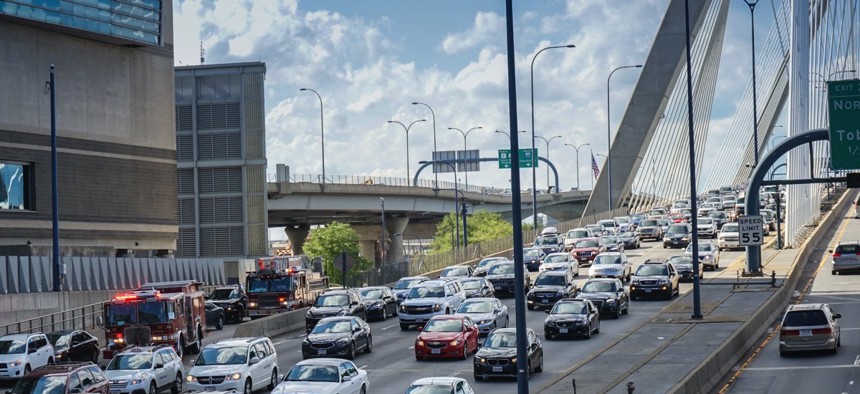American Lung Association Releases List of the Nation’s Most Polluted Cities


Connecting state and local government leaders
Ozone and year-round particle pollution are improving, but cities will find it harder to make gains and save lives between worsening climate change and President Trump’s rollback of Clean Power Plan protections.
Los Angeles retained its title as the city with the worst ozone pollution, as did Bakersfield, California, for short-term particle pollution, according to a new American Lung Association report.
Ozone and year-round particle pollution continued to improve between 2013 and 2015, per “State of the Air 2017,” but “dangerous spikes” in particle pollution increased, and more than 125 million Americans remain exposed to unhealthy air pollution.
Most of the 25 worst cities for ozone and year-round particle pollution, of which Visalia-Porterville-Hanford, California took the crown for the first time, reached their lowest pollution levels since the annual report’s inception.
The report makes a not-so-subtle reference to President Trump’s March signing of an executive order rolling back clean air requirements under the guise of boosting coal jobs and thereby energy independence:
Despite that continued need and the nation’s progress, some people seek to weaken the Clean Air Act, the public health law that has driven the cuts in pollution since 1970, and to undermine the ability of the nation to fight for healthy air.
Cleaner power plants and vehicle engines fuel declines in ozone and year-round particle pollution, reducing the risk of asthma attacks, lung cancer and premature deaths, but not the threat of climate change, according to the report.
Several cities reported record-high unhealthy days due to wildfire smoke and other extreme weather events caused by a worsening climate.
Burlington-South Burlington, Vermont; Cape Coral-Fort Myers-Naples, Florida; and Elmira-Corning, New York all topped ALA’s cleanest cities list with zero high ozone or high particle pollution days and minimal year-round particle levels. Wilmington, North Carolina, joined their company in sixth place for the first time after Honolulu and Palm Bay-Melbourne-Titusville, Florida.
Counties that received an F grade for at least one pollutant are home to 29.5 million children under age 18 and 16.7 million seniors. More than 4.3 million children and 2.3 million seniors live in counties failing all three tests.
ALA’s advice: Protect the Clean Air Act, reduce the power plant carbon pollution causing climate change, maintain Clean Vehicle Emission Standards, reduce emissions from new and existing oil and gas operations, and improve the Air Pollution Monitoring Network.
The report further offers this advice to states:
States can choose a variety of ways to cut carbon pollution with the Clean Power Plan. They can choose to require cleaner fuels for existing utilities, improve energy efficiency, produce more clean energy and partner with other states to jointly reduce carbon pollution. In February 2015, the U.S. Supreme Court issued a stay on the plan, putting EPA's enforcement on a temporary hold while the courts hear the case. Even before the lower court released its decision on the Clean Power Plan, President Trump issued an executive order directing EPA Administrator Scott Pruitt to roll back the plan. However, the Lung Association and others will continue to fight to secure reductions in carbon dioxide emissions from power plants and other sources.
A complete list of the report’s most polluted cities is here, and state report cards are here.
Dave Nyczepir is a News Editor at Government Executive’s Route Fifty and is based in Washington, D.C.

NEXT STORY: Are Chicago's Party Buses 'Rolling Cemeteries'?





